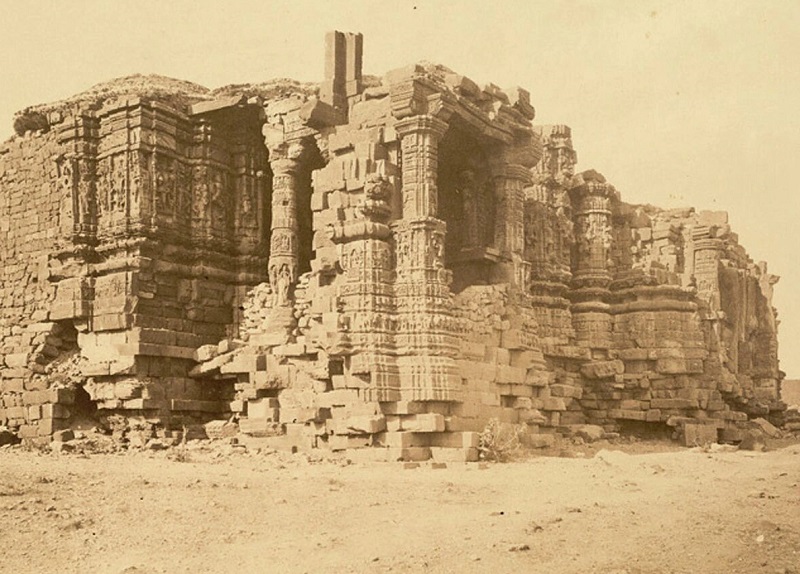The Somnath Temple in Prabhas Patan, Gujarat, near Veraval, is one of the most important pilgrimage sites in the country. Somnath is one of his 12 Shiva Jyotirlingas existing in our country. Every year, thousands of devotees gather at Somnath to pay homage to Lord Shiva. This is a magnificent coastal temple located in the Saurashtra region of Gujarat. The history and mythology of Somnath temple add to its splendor and religious austerity, making it a constant place of interest for visitors to the temple.
Suggested Tour: Dwarka Somnath Tour Package
History of Somnath
This temple has a varied and detailed history. The first version of this temple is said to have been built before the beginning of the Christian era. His second version of this temple was built on the initiative of King Vallabhi between 408 and 768 AD. Historical records say that this temple was destroyed many times by invaders and revived several times, so this temple is sometimes called the "Temple of Eternity".
Archaeological research shows that the Somnath temple was rebuilt almost three times before Muhammad Ghaznavi's raid in 1026. It is also reported that the temple was attacked three more times after that. This temple was attacked and destroyed up to six times until today's seventh version of him was created.
The last reconstruction of Somnath temple was done in 1947 under the initiative of Sardar Vallabhbhai Patel. Deputy Prime Minister at the time. Prabhashankar Sompura was chosen as the architect and the present Somnath temple was born. On May 11, 1950, the then President Rajendra Prasad inaugurated the temple.
Some ancient texts mention that this temple was first built in gold in Satya Yuga by King Somraj. In Treta Yuga, Ravana made it of silver, while in Dwapara Yuga, Lord Krishna made it of wood. King Bhimadev then had a temple built of stone. This is the claim of several ancient documents of our country.
Must Read: Wildlife Sanctuaries in Gujarat
Myths and Legends
There are many fascinating stories associated with Somnath Temple that will definitely pique the curiosity of all God lovers and curious tourists. Mythological stories tell that Chandra or the moon god performed severe penance here to be freed from the curse of his father-in-law Daksha his Prajapati.
It is said that the moon god married 27 daughters of Daksha Prajapati. But out of 27 wives, he preferred only Rohini and ignored the rest. Daksha Prajapati was angry at the neglect of his other daughters and cursed that the moon would soon lose its brightness. The worried Moon then prayed to Lord Shiva and descended on Prabhas Patan to remove the curse. Lord Shiva was finally impressed by his dedication and freed him from the curse. In gratitude, the moon god built Jyotirlingam at this place, which later became famous as Somnath temple.
Suggested Tour: Gujarat Tour Packages
FAQs for Somnath Temple History
What Is The Significance Of The Somnath Temple?
The Somnath Temple is one of the most revered and ancient shrines in India, dedicated to Lord Shiva. It holds immense spiritual significance and is believed to be the first among the twelve Jyotirlinga shrines of Shiva.
How Old Is The Somnath Temple?
The exact age of the temple is difficult to ascertain due to its ancient origins, but it is believed to have been built several times over the centuries. Historical references date back to ancient times, possibly as early as the 4th century AD.
What Is The History Behind The Destruction And Reconstruction Of Somnath Temple?
The temple has faced several instances of destruction by foreign invasions, notably by Mahmud of Ghazni in the 11th century. It was rebuilt several times after these invasions, with the current structure dating to the mid-20th century.
Who Commissioned The Rebuilding Of The Somnath Temple In The 20th Century?
The rebuilding of the Somnath Temple in the 20th century was initiated by Sardar Vallabhbhai Patel, India's first Home Minister, and completed by K.M. Munshi, a prominent independence activist and politician.
What Architectural Styles Are Evident In The Somnath Temple?
The temple exhibits a blend of various architectural styles due to its multiple constructions. While the original style was typical of ancient Indian temple architecture, subsequent renovations and rebuildings have incorporated elements from diverse periods.
What Artifacts Or Relics Are Housed In The Somnath Temple?
The temple is said to have housed various precious artifacts and idols, but due to the historical events and invasions, many of these were destroyed or looted. Presently, the temple holds revered idols of Lord Shiva.
What Religious Festivals Are Celebrated At Somnath Temple?
The temple observes several festivals, with Maha Shivaratri being one of the most significant. Other festivals like Kartik Purnima, Shravan Maas, and Diwali are also celebrated with great fervor.
Is There Any Mythological Significance Associated With The Somnath Temple?
According to mythology, the temple's location is where the moon god, Chandra, worshipped Lord Shiva to free himself from a curse. Hence, the name "Somnath," meaning "the lord of the moon."
What Is The Current State Of Preservation And Maintenance Of The Somnath Temple?
The temple is currently well-maintained and managed by the Shree Somnath Trust. Efforts are consistently made to preserve its historical and cultural heritage.
Can Visitors Of Other Religions Or Beliefs Enter The Somnath Temple?
Yes, the temple is open to people of all faiths and beliefs. It welcomes visitors from diverse backgrounds to experience its historical and spiritual aura.

Comments
Post a Comment